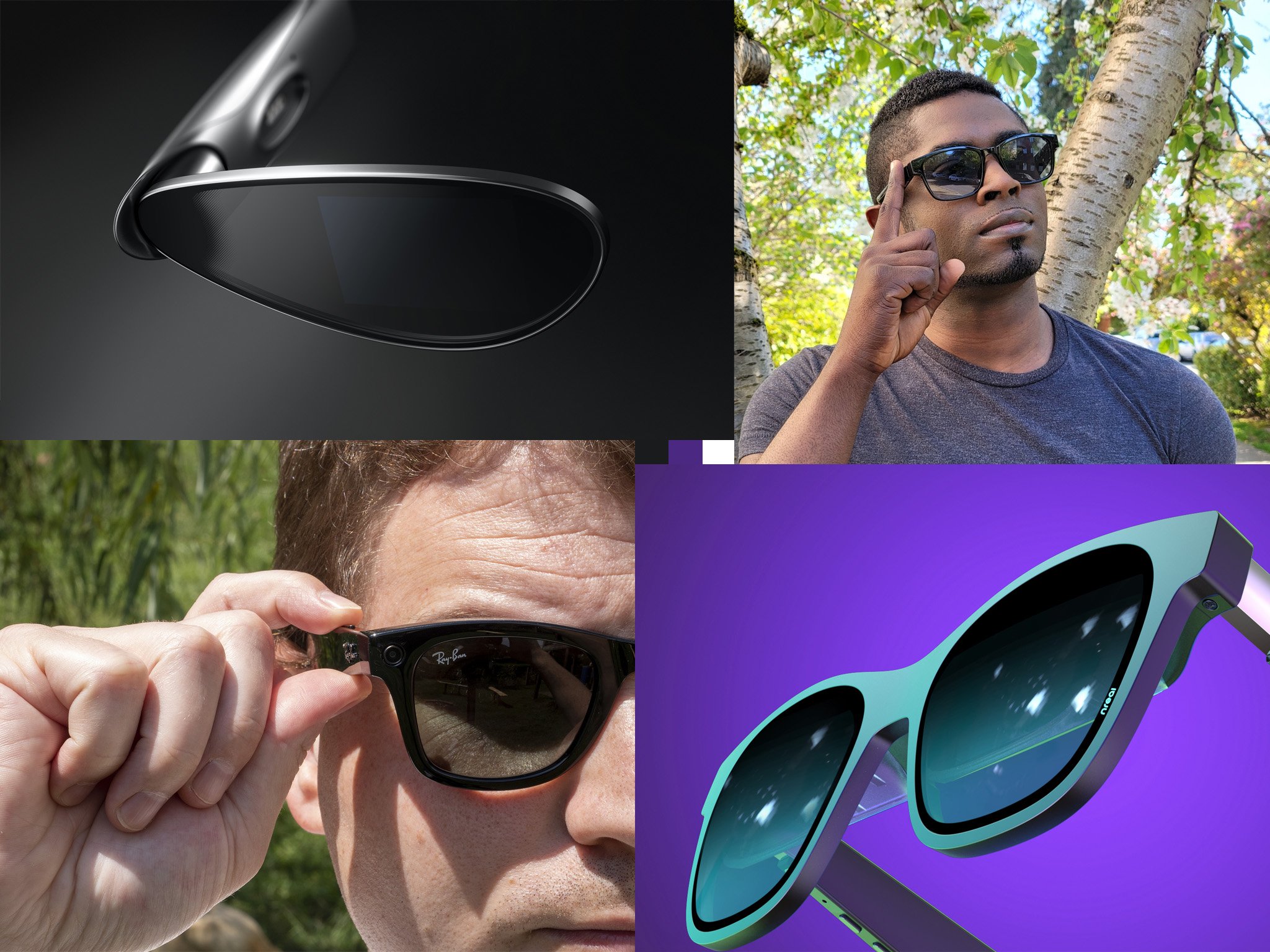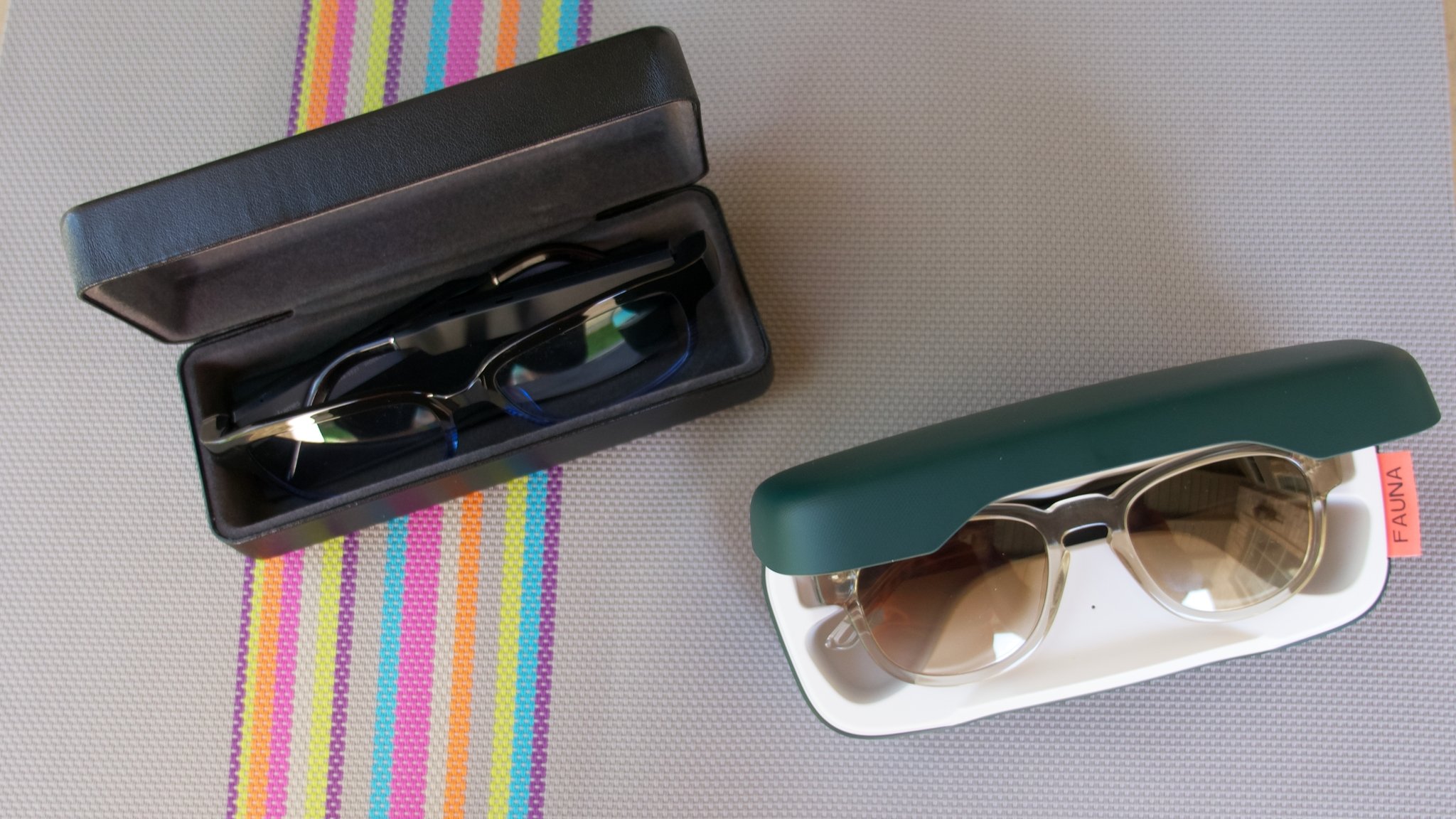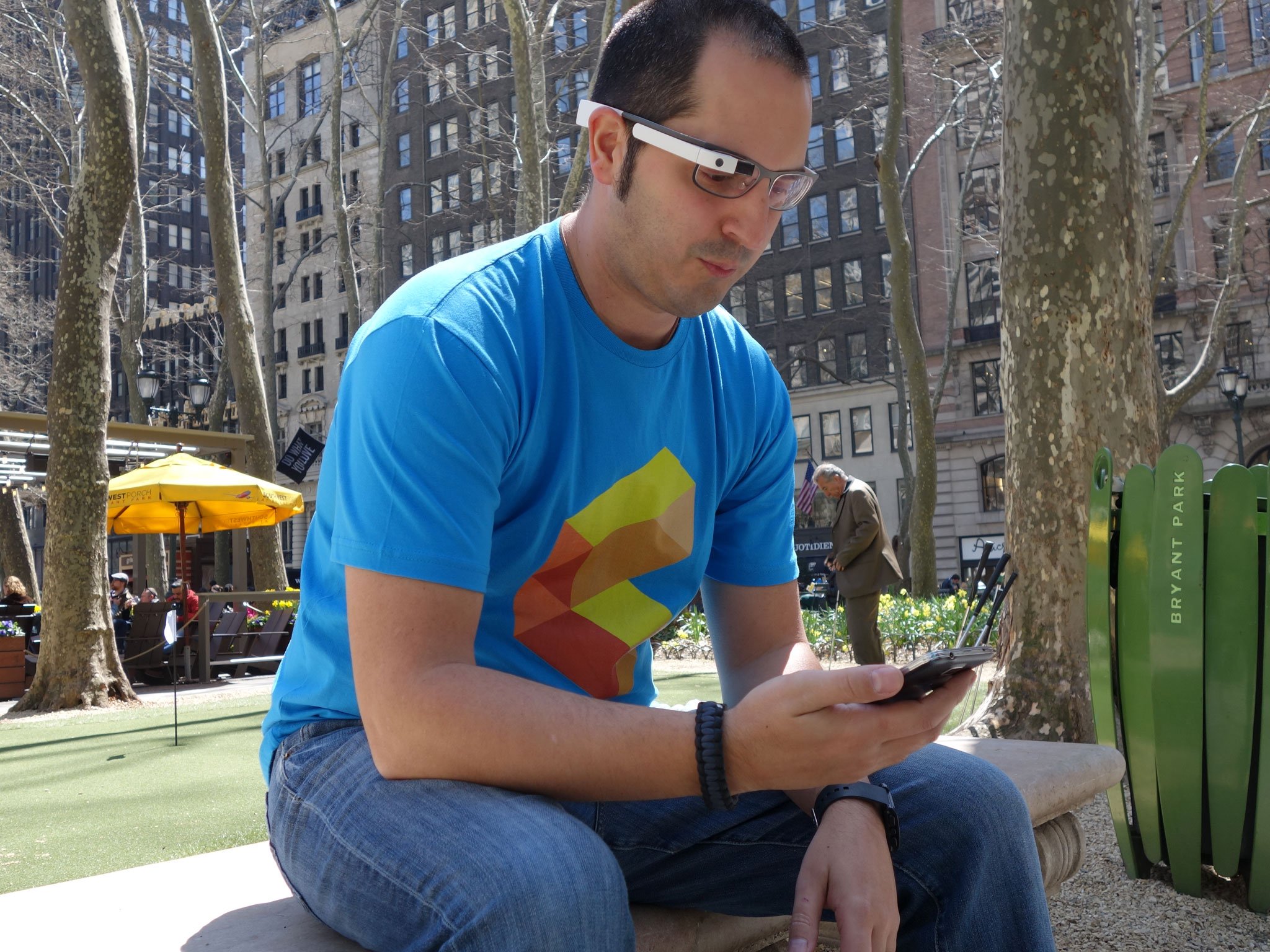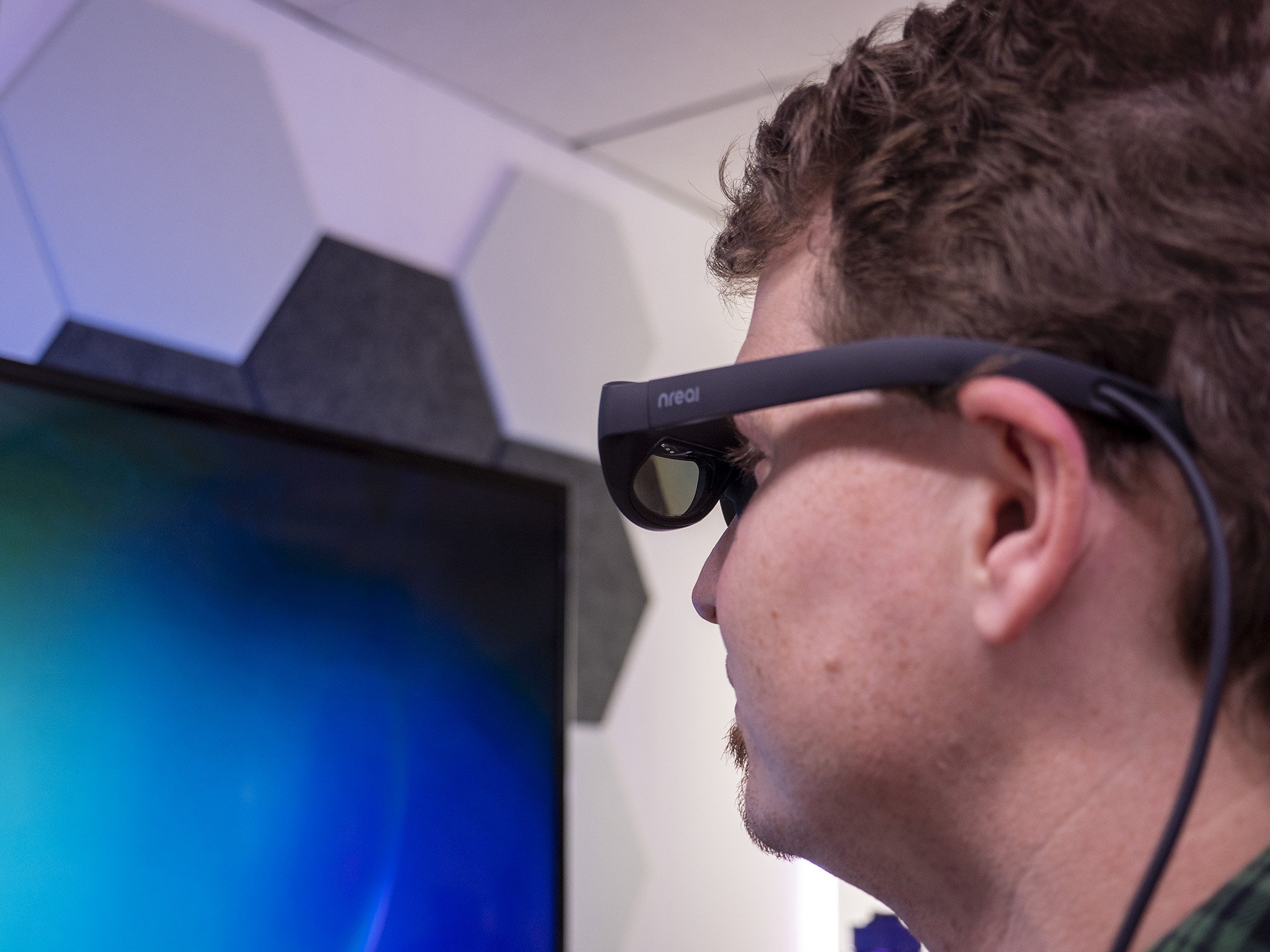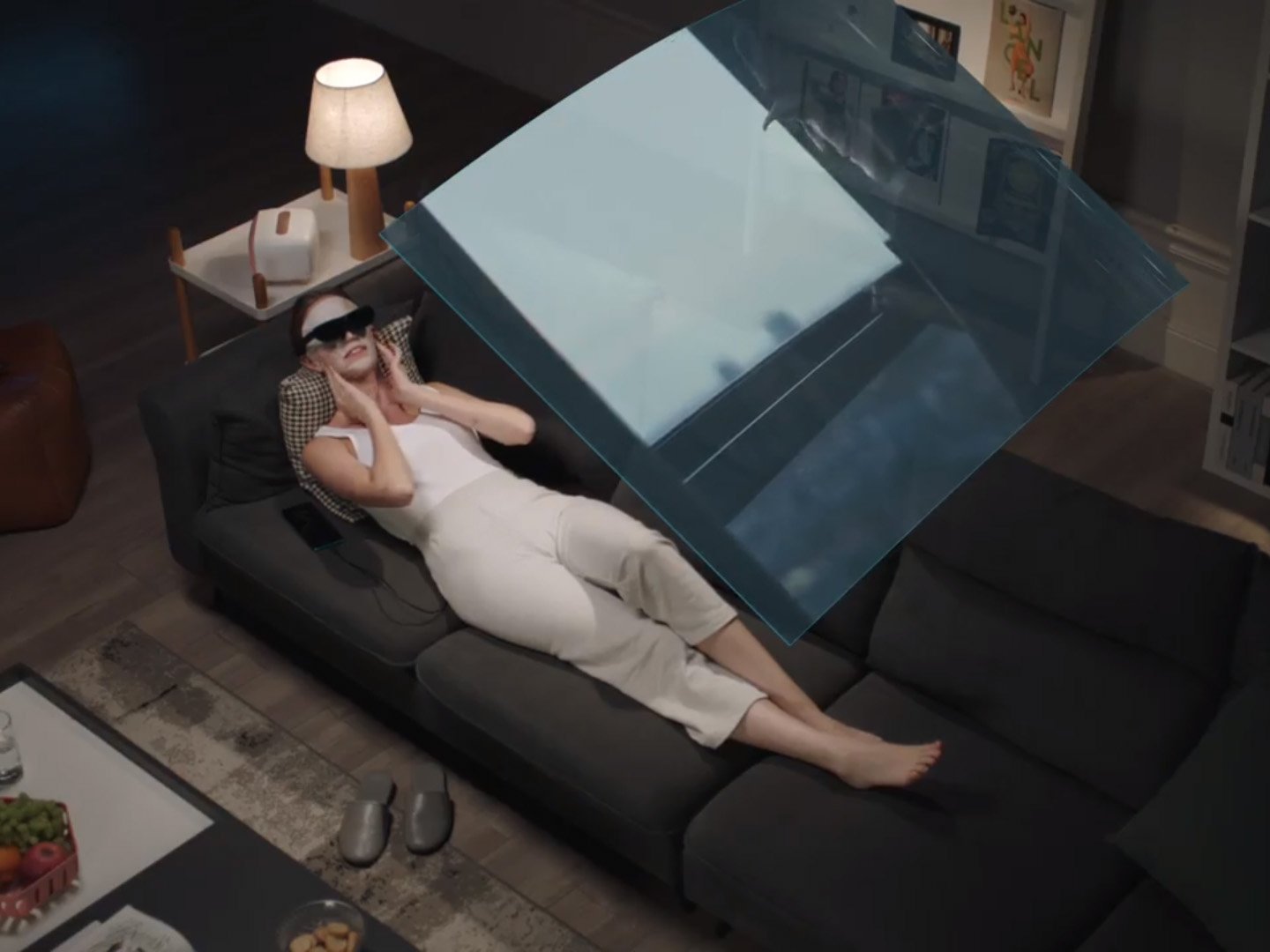Here's all the different types of smart glasses and the ones that are best
Feel smart with a pair of connected glasses that fits your lifestyle.
Thinking about picking up a pair of smart glasses in the near future, or maybe you just want to learn a bit more about this fledgling technology? Smart glasses are both a specific category and a catch-all term at the same time, further lending to the confusion that surrounds the current state of any kind of tech-laden lenses that sit upon your nose.
Never fear, because we're here to explain them all to you and help you pick the best smart glasses from each category. Whether you just need a cool pair of shades like the Razer Anzu that lets you take phone calls without having something in your ears at all times, or actually want to be immersed in a second digital world with a giant 220-inch virtual screen like Nreal Light can offer, the smart glasses category has something for just about everyone and every budget.
Jump to:Audio glassesOf the four categories of smart glasses, audio glasses are the single largest category by a fairly wide margin. These glasses tend to stick closest to the expected size and look of any kind of traditional prescription glasses or sunglasses, yet offer speakers built into the temple arms that clasp themselves behind each of your ears.
Audio glasses are mainly designed to replace Bluetooth headphones in certain situations.
While these are speakers, they don't operate quite like you would expect a normal Bluetooth speaker to work. Sure, any pair of audio glasses will connect to your smartphone via Bluetooth and stream music - or any other audio source, like a phone call or audio from a video you're watching - but these speakers are designed in such a way that they mostly send audio to your ears and, essentially, nowhere else.
That means you can jam to your favorite tunes, take phone calls, or watch videos in relative privacy, although there's still a bit of audible sound that folks around you might be able to hear. In my experience with several pairs of audio glasses, this usually means that people can hear faint sounds coming from your general vicinity but usually cannot hear words or be able to identify quite what's playing.
Additionally, many audio glasses support the use of your favorite digital assistant - whether that's Google Assistant, Amazon Alexa, or Apple Siri - meaning you don't even have to take your phone out of your pocket to ask your assistant to do something for you!
Since these have a battery built-in to power the speaker experience, they'll need to be charged every so often. Thankfully, most products in this category charge while inside their protective cases, so you won't normally ever have to worry about a dead battery when you are ready to wear them.
As this category is so large, we've picked out two of our favorites for you to choose from. Fauna Audio Glasses are our number one pick of the litter. They not only allow you to use any virtual assistant you have set as default on your phone, but Fauna has built in a unique Whistles feature into their software that can alert you if your posture isn't quite right, if you forgot about your 3 p.m. meeting, or even play sound loops to calm or energize you during the day.
Glasses in this category most closely resemble a normal pair of prescription or sunglasses.
If you're a person who uses Amazon Alexa on the daily, a pair of Amazon Echo Frames 2nd Gen might be a better fit. These provide a surprisingly excellent music listening experience, and the Amazon Alexa app that powers the glasses experience is incredibly well thought-out, offering options like automatic volume adjustment based on the ambient volume of your surroundings, wake word changes (so the name Alexa doesn't constantly get triggered), and even ways to filter out app notifications.
Social glassesSocial glasses are the next step up from audio glasses, typically offering both a pair of speakers on the glasses temples, as well as cameras situated around the lenses. Ray-Ban Stories made the biggest splash when they launched in late Summer 2021 and, despite the Facebook account requirement, are actually a pretty fantastic pair of social glasses.
Social glasses are mainly designed to enhance your social media posts by presenting your content from a new perspective.
But the first big-name social glasses to make waves were Snap Spectacles. Launched in Fall 2016, these glasses were designed to help users take better snaps of their lives, giving them a hands-free way to share with all their friends on Snapchat. Subsequent releases have added water resistance, more varied styles, and stereoscopic vision with exclusive Snapchat filters.
Both of these glasses serve a different market - Snap's being folks who spend most of their day on the company's chat platform, while Ray-Bans are designed more as a catch-all for any social media platform you use - but they both represent a pair of connected glasses that are designed to enhance your social media posts by presenting your content from a new perspective.
Indeed, when I reviewed Ray-Ban Stories in the Summer, I took them to an outdoor concert, which freed up my hands to hold food and drink (instead of my phone) while still being able to easily record snippets of the concert for my own personal consumption later.

Aside from the social media tie-ins - in which Snap Spectacles 3 are the better glasses on a technical capability level if you're a Snapchat user - Ray-Ban Stories also double as audio glasses in that they can be used to stream music, take phone calls, or hear any kind of audio coming from your phone. The downside is that neither of these products works with any virtual assistant, so that big feature from audio glasses isn't something you'll enjoy on these products.
Smart assisted reality glassesThe actual category of smart glasses called, well, smart glasses is also known as assisted Reality (aR) glasses. The original Google Glass fits squarely into this category, which is appropriate given the catch-all term smart glasses used to describe the overall product category derives from the fact that Google Glass was the first major product of its kind to make it to market.
These glasses feature one display that is designed to deliver helpful information throughout the day.
Smart glasses ship with a display of some kind either built into the lenses themselves or, as in Google Glass's case, a smaller crystal lens piece that's separate from the actual glasses lenses. No matter which product you're looking at, a pair of assisted reality glasses always features only one display, not one for each eye the way a pair of full AR glasses would.
The idea here is to deliver information that assists you throughout life, whether that's real-time navigation in a small rectangle at the peripheral of your view, incoming text messages or phone calls, and even visual search results or weather conditions.
Smart assisted reality glasses typically don't offer head tracking functionality, although most of them have some sort of gyroscope or other positional tracking function that aids in giving proper directional position for navigation. In other words, the contents in the display don't move around as your head moves around.
They're there to be a heads-up display for your life, or similar to the icons and words that are always on screen while you play a video game - in that example, think of your character's health, stamina, the mini-map, or whatever elements may be persistently on the screen while playing.
Just like all other connected glasses, these would pair with your phone via Bluetooth and generally use a dedicated app to help deliver information from your phone to the display on the glasses. Many products in this category also feature speakers as audio glasses do, as well as a camera or two that function similarly to social glasses. In most cases, a pair of smart assisted reality glasses would serve as the combined upgrade of the previous two categories.
A pair of smart assisted reality glasses would serve as the combined upgrade of the previous two categories.
Despite the age of the category, there isn't a bevy of products to choose from at the consumer level. Google Glass 2 migrated to an enterprise-only world due to the cost and general use-case scenarios of the product. Despite that, however, several new pairs of smart assisted reality glasses are still being announced fairly regularly, the latest being OPPO Air Glass.
AR and XR glassesAR Glasses are the be-all-end-all smart glasses product, as they contain the features from all three of the previous categories and add several additional features that incur a significant price increase. AR glasses, also known as augmented reality glasses, are designed to augment - or enhance - reality via visual digital information. This category has two sub-categories in and of itself: cinema display glasses, and full augmented reality glasses.
There are two main types of AR glasses: Cinema display glasses, and XR glasses.
Cinema display glasses - like the TCL NXTWEAR G - are most commonly designed for consumer use, as they utilize a display located in both glasses lenses to create a virtual screen that can display any content a phone or computer can display. Think of it as a giant monitor or TV that only you can see.
All cinema display glasses connect to a PC or smartphone via a USB cable - typically a USB Type-C connector as is found on modern smartphones - and can deliver a mirror image of your smartphone screen or, in some cases, a completely 3D holographic space in which apps can be opened in floating windows, much as you might expect on a desktop or laptop operating system.
But most folks who buy cinema display glasses will likely use them for watching movies or playing games on a larger screen than their smartphones can deliver. This is particularly useful for anyone who might find themselves traveling often, as displays on these types of glasses can only be viewed by the person wearing them.
Cinema display glasses create a giant virtual screen that can be used just like a physical monitor or TV that no one else can see.
That adds a level of privacy a smartphone screen can't offer, as well as aiding in the long-term comfort of the user. By not having to hold your phone up to view the display, you thereby can relax your arms and neck and sit in a more natural, comfortable position for longer periods of time. You could even lay down and watch TV or movies without having to crane your neck since the display is always right in the center of your view.
Cinema display glasses always have speakers and a display component but some, like Nreal Light, offer up a smattering of augmented reality (AR) or mixed reality (MR) experiences - collectively known as XR, or extended reality - because they also feature dual cameras on the front, giving the glasses the ability to understand 3D space.
Nreal Light bridges the gap between cinema display glasses and full-fledged XR glasses by offering features like head tracking and spatial recognition that apps can take advantage of. This means that thanks to the software on the glasses and the companion app on your phone, proper XR experiences can overlay digital content onto real-world content.
XR glasses are designed to overlay digital content onto real-world objects.
Theoretical examples of this include being able to see the speed of a ball as it's pitched in a live baseball game, being able to interact with special digital content in real-world locations as was demonstrated in a popular Meta commercial, or just seeing arrows on the street through the lenses of your glasses as you're navigating around town.
Some XR glasses are physically tethered to a smartphone or computer via USB cable - as is the case with Nreal Light - but most of them are designed to be worn completely wirelessly.
Some wireless XR glasses, like Snap Spectacles 4, are surprisingly small but are designed to offer short experiences (30 minutes) on a single charge. Spectacles 4 also have a very narrow field of view when compared to physically larger XR glasses, which means only a small square in the center of your vision is used to display virtual content.
Other larger, more expensive XR glasses like Microsoft HoloLens or Magic Leap glasses offer a wider field of view for virtual content, as well as significantly longer battery life at the expense of being bulky. While they aren't quite as bulky as a VR headset, they aren't designed to be something you'd wear every day - or even while walking around town - but are often tailored for enterprise use-cases.
In many cases, XR glasses feature cameras and other sensors on the front that can detect hands, which enables more natural ways of interacting with digital content in the real world. Microsoft's HoloLens 2 demonstration above shows what this looks like through the lens of the glasses and what can be expected if you were to own a pair.
XR glasses are the best embodiment of the full vision of connected glasses. As it's still new technology, the best way to experience this vision is often through a pair of glasses that weigh a lot, are quite bulky, and are often expensive. Just as with any technology, this has quickly evolved and is getting better every single year.
While there's no telling if we'll always use the form-factor of traditional glasses to overlay the real world with digital content, one thing is for certain: the XR concept is here to stay, and it's only going to become more prolific as time goes on.
